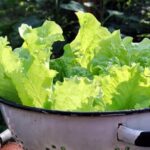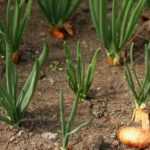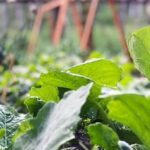When it comes to growing vegetables, compost is often hailed as the key to success. The right blend of organic matter can enrich the soil, providing essential nutrients and promoting healthy plant growth. But have you ever considered using fish compost in your vegetable garden? In this blog post, we will delve into the world of fish compost and explore why it may just be the secret ingredient for thriving vegetable gardens.
Composting is a natural process of decomposition that transforms organic waste into nutrient-rich soil amendment. Fish compost, specifically, is made from fish waste, such as bones, skin, scales, and leftover bits that are generally discarded. Unlike traditional compost made from plant materials, fish compost offers a unique set of benefits for vegetable gardens.
Fish compost is packed with essential nutrients that are vital for healthy plant development. Nitrogen, phosphorus, and potassium are just some of the elements found in abundance in fish compost. These nutrients play a crucial role in maintaining soil fertility and supporting optimal plant growth. Furthermore, fish compost aids in soil enrichment by increasing organic matter content and improving soil structure, leading to improved water drainage and prevention of root rot.
In this blog post, we will unravel the composition and origins of fish compost to understand its unique qualities. We will also explore its nutritional benefits for vegetable gardens and discuss how it enhances soil health and productivity. Additionally, we’ll delve into how fish compost acts as a natural defense mechanism against diseases and pests, reducing the need for harmful chemical interventions.
Stay tuned as we guide you through best practices for using fish compost in your own vegetable garden, including step-by-step instructions on application techniques and appropriate quantities. We’ll also reveal how you can make your own fish compost at home while sharing testimonials from gardeners who have witnessed firsthand the remarkable impact of this secret ingredient.
Are you ready to uncover the power of fish compost for bountiful vegetable gardens? Let’s dive in and discover how this eco-friendly soil amendment can transform your gardening experience.
What Is Fish Compost? Understanding the Composition and Origins
Fish compost is a type of organic compost that is specifically made from fish waste and other materials. It differs from other types of compost in its composition and origins, making it a unique and valuable resource for vegetable gardens.
To understand fish compost, it’s important to know how it is created. The process involves collecting fish waste, such as leftover heads, tails, and bones, which would otherwise be discarded. These fish parts are then combined with other organic matter like plant debris or wood chips to create the compost. The mixture is aged and broken down through a process called decomposition, which occurs with the help of microorganisms like bacteria and fungi.
One key benefit of fish compost is its eco-friendliness and sustainability. It utilizes waste materials that would otherwise go to waste or even generate additional pollution if not disposed of properly. By diverting these materials into the production of fish compost, we can reduce waste while creating a valuable resource for our gardens.
Some gardeners may wonder about the potential odor associated with fish compost. However, when properly produced and utilized in appropriate quantities, any odors can be minimized or eliminated. This makes it a practical option for home gardeners who may have concerns about unpleasant smells.
In summary, fish compost is a unique type of organic compost that utilizes fish waste to create a valuable resource for vegetable gardens. Its composition involves combining fish parts with other organic matter through the process of decomposition. Fish compost offers an eco-friendly solution by repurposing waste materials while providing essential nutrients for healthy plant growth.
The Nutrient Powerhouse
Fish compost is not only a valuable soil amendment for vegetable gardens but also a nutrient powerhouse that promotes healthy plant growth. Understanding the nutritional benefits of fish compost can help gardeners make informed decisions about incorporating this organic fertilizer into their gardening practices.
Rich Nutrients for Healthy Soil and Plant Development
Fish compost contains a wide range of essential nutrients that are crucial for the health and development of vegetable plants. One of the key elements found in fish compost is nitrogen, which plays a vital role in promoting leafy green growth. Vegetable crops such as lettuce, spinach, and kale greatly benefit from this nutrient as it helps them produce an abundance of lush foliage.
In addition to nitrogen, fish compost is also rich in phosphorus and potassium. Phosphorus supports root development, flowering, and fruit production, while potassium aids in overall plant vigor and disease resistance. These elements work together synergistically to ensure robust plant growth and enhance crop yields.
Promoting Healthy Soil Conditions
Aside from providing essential nutrients to plants, fish compost also improves soil health by enriching its organic matter content. When added to the soil, fish compost increases microbial activity, fostering a thriving soil ecosystem that promotes nutrient cycling and availability. This leads to enhanced nutrient uptake by plants and improved overall soil fertility.
Another benefit of using fish compost is its ability to improve soil structure. The organic matter in fish compost helps bind particles together, creating aggregates that allow for better water infiltration and root penetration. As a result, the soil becomes more well-drained, preventing issues such as waterlogging or root rot that can negatively affect vegetable plants.
Sustainable Gardening with Fish Compost
One of the remarkable aspects of fish compost is its eco-friendliness and sustainability. Fish waste used in the composting process would otherwise end up in landfills or be discarded as waste. By utilizing these resources through composting, gardeners contribute to reducing waste and achieving a more sustainable gardening practice.
Furthermore, fish compost is a natural and organic alternative to synthetic fertilizers. It does not contain harmful chemicals or additives that can harm beneficial organisms in the soil or pollute waterways. By choosing fish compost for vegetable gardens, gardeners can prioritize their environmental impact while still providing the necessary nutrients for optimal plant growth.
Soil Enrichment and Improved Drainage
Fish compost is not only a valuable source of nutrients for vegetable gardens but also plays a crucial role in enriching the soil and improving drainage, which ultimately enhances garden productivity. One of the main benefits of using fish compost in vegetable gardens is its ability to increase organic matter in the soil. When fish compost is added to the soil, it helps break down organic materials and releases essential nutrients that are vital for plant growth.
Additionally, fish compost improves soil structure by increasing its water-holding capacity and promoting better aeration. This allows plant roots to penetrate deeper into the soil and access both nutrients and water more efficiently. By enhancing the soil’s nutrient availability and structure, fish compost creates an optimal growing environment for vegetables, leading to healthier plants with increased resistance to diseases and pests.
Research has shown that incorporating fish compost into vegetable gardens can significantly improve water drainage. The porosity of fish compost allows excess moisture to drain away from the roots, preventing waterlogging and reducing the risk of root rot. Adequate drainage is essential for healthy plant development as it ensures that oxygen reaches the roots and prevents them from suffocating.
To maximize the benefits of fish compost in terms of soil enrichment and improved drainage, it is important to apply it correctly. Gardeners should spread a layer of fish compost about 2-3 inches thick evenly over their vegetable beds before planting. The compost should then be lightly incorporated into the top few inches of soil using a garden fork or tiller.
| Benefit | Description |
|---|---|
| Increases organic matter in the soil | Fish compost breaks down organic materials, releasing essential nutrients for plant growth. |
| Improves soil structure | Fish compost increases water-holding capacity and promotes better aeration, allowing roots to access nutrients and water efficiently. |
| Enhances nutrient availability in the soil | The nutrients released from fish compost create an optimal growing environment for vegetables, leading to healthier plants. |
| Promotes better water drainage | The porosity of fish compost allows excess moisture to drain away from the roots, preventing waterlogging and root rot. |
Disease Suppression and Pest Management
Vegetable gardens are highly susceptible to diseases and pests that can negatively impact plant health and reduce overall productivity. However, fish compost can serve as a natural defense mechanism against these threats, offering an eco-friendly and sustainable solution for gardeners.
One of the key benefits of fish compost is its natural ability to suppress diseases in vegetable gardens. The beneficial microbes present in fish compost help create a healthy soil ecosystem, promoting disease resistance in plants. These microbes work by outcompeting harmful pathogens, effectively reducing the likelihood of disease outbreaks.
In addition to disease suppression, fish compost also plays a crucial role in pest management. Many garden pests, such as aphids, slugs, and snails, are deterred by the strong smell of fish compost. By incorporating it into the garden soil or using it as a top dressing around plants, gardeners can create an environment that discourages pests from feeding on their vegetables.
Using fish compost as a natural defense mechanism not only reduces the reliance on chemical interventions but also contributes to the overall health and sustainability of the garden ecosystem. It promotes biodiversity by attracting beneficial insects and organisms that prey on common garden pests. This creates a balanced ecosystem where natural predators keep pest populations in check without harming the environment or beneficial organisms.
To fully utilize fish compost for disease suppression and pest management in vegetable gardens, proper application techniques are essential. Gardeners should apply a layer of fish compost around plants or mix it into the top few inches of soil. Regularly replenishing the compost helps maintain its effectiveness throughout the growing season.
By harnessing the disease-suppressing properties of fish compost and integrating it into their gardening practices, enthusiasts can protect their vegetable gardens naturally while promoting sustainability and environmental responsibility.
Application and Incorporation
Fish compost is a powerful tool for enhancing the productivity and health of vegetable gardens. However, its benefits can only be fully realized if it is applied and incorporated correctly into the soil. In this section, we will discuss the best practices for using fish compost in vegetable gardens to ensure optimal results.
Before applying fish compost, it is important to prepare the soil adequately. Start by removing any weeds or debris from the garden bed. Loosen the soil using a garden fork or tiller to create a loose and aerated foundation for the compost. This will allow for better nutrient absorption and root development.
When it comes to applying fish compost, it is crucial to use the right quantities. A general rule of thumb is to apply around 1-2 inches of compost on top of your garden bed. However, you can adjust this amount based on your specific soil conditions and plant requirements. If you are unsure about the quantity, consult with a local gardening expert or do a soil test to determine nutrient deficiencies.
Once you have spread the compost evenly over your vegetable garden bed, it’s time to incorporate it into the soil. Use a garden rake or hoe to gently mix and blend the compost into the existing topsoil. This ensures that nutrients are distributed evenly and readily available for plant uptake.
To maximize the benefits of fish compost, incorporate it into your gardening routine regularly. Many gardeners find success by adding fish compost at least once a year during spring or fall when plants are actively growing and require additional nutrients.
It’s worth noting that fish compost has a distinct smell due to its organic origins, which may be unpleasant for some individuals. To minimize odor issues, consider incorporating other organic matter like leaves or straw into your garden beds along with the fish compost.
Fish Compost DIY
Materials and Equipment Needed
To make fish compost at home, you will need a few materials and equipment. Gather the following items before you begin:
- Fish Scraps: Collect fish scraps from your own kitchen or local fish markets. These can include heads, bones, skin, and any other parts that are not usually consumed.
- Organic Waste: Aside from fish scraps, gather other organic waste such as vegetable peels, coffee grounds, tea leaves, and eggshells. These will add additional nutrients to the compost.
- Compost Bin or Pile: You will need a designated compost bin or pile to decompose the organic materials properly. Make sure it is large enough to accommodate all the ingredients.
- Garden Fork or Compost Turner: This tool will help you aerate and mix the compost for optimal decomposition.
- Water Source: You will need water to keep the compost moist during the decomposition process.
The DIY Process
Follow these steps to make your own fish compost:
- Prepare the Compost Bin: Choose a suitable location for your compost bin or designate an area in your garden for a compost pile. Ensure proper drainage and air circulation.
- Layering: Begin by adding a layer of brown organic matter such as leaves or straw at the bottom of the bin/pile. This provides carbon-rich material for the microbes to break down the nitrogen-rich fish waste more efficiently.
- Add Fish Scraps: Place a layer of fish scraps on top of the brown organic matter layer.
- Add Organic Waste: Layer green organic waste like vegetable peels, coffee grounds, tea leaves, and eggshells on top of the fish scraps.
- Repeat Layers: Continue alternating layers of brown organic matter and green organic waste until all the materials are used up or until you reach the desired height for your compost pile.
- Moisture: After each layer, lightly moisten the compost materials with water. The compost should be damp but not soaked.
- Aerate: To ensure proper decomposition, regularly turn or aerate the compost using a garden fork or compost turner. This will help speed up the breakdown process and prevent unpleasant odors.
- Maintain Moisture and Temperature: Keep an eye on the moisture level of the compost and add water as needed to maintain dampness. The ideal temperature for decomposition is between 135-160°F (57-71°C), so monitor the internal temperature using a compost thermometer if possible.
- Decomposition Time: Depending on various factors such as temperature, moisture, and the size of your compost pile, it can take several months to a year for the fish compost to fully decompose into dark, crumbly material.
Tips for Success
Here are some additional tips to ensure successful DIY fish composting:
- Chop Fish Scraps: Smaller fish scraps will decompose faster than larger ones, so consider chopping them into smaller pieces before adding them to the pile.
- Balance Greens and Browns: Aim for a balanced ratio of green organic waste (high in nitrogen) and brown organic matter (high in carbon). This balance will provide optimal conditions for decomposition.
- Avoid Fatty Fish or Excessive Oils: While fats and oils will eventually break down in the composting process, they can slow down decomposition and attract pests. It’s best to avoid excessively fatty fish or dispose of any excess oils separately.
- Monitor Odors: If your fish compost starts to emit strong odors like ammonia or rotten smell, it may indicate an imbalance in your carbon-to-nitrogen ratio or insufficient aeration. Adjust accordingly by adding more brown matter or turning the pile more frequently.
Remember, making fish compost at home requires patience as it takes time for the decomposition process to work its magic. However, the end result will be nutrient-rich compost that can significantly benefit your vegetable garden.
Real-Life Success Stories
One of the most compelling reasons to consider using fish compost in your vegetable garden is the success stories and testimonials from garden enthusiasts who have experienced remarkable results. Many people have shared their experiences and showcased the benefits of using fish compost, leading to thriving gardens and bountiful harvests. These real-life success stories serve as inspiration and evidence of the power of fish compost in promoting healthy soil and robust plant growth.
Gardeners across different regions and climates have reported positive outcomes after incorporating fish compost into their gardening practices. One testimonial comes from Jane, a gardener based in a dry desert region. Before using fish compost, she struggled with dry, sandy soil that lacked nutrients.
However, after adding fish compost to her garden beds, she noticed a significant improvement in soil quality. The organic matter provided by the fish compost helped retain moisture in the soil, reducing water requirements while enhancing plant growth.
In another success story, John, an urban gardener with limited space, experienced increased productivity after incorporating fish compost into his raised beds. The nutrient-rich composition of the fish compost provided his plants with essential elements like nitrogen, phosphorus, and potassium, resulting in healthier plants and higher yields. John was particularly impressed with how his vegetables grew faster and had greater resistance to diseases compared to previous seasons when he didn’t use fish compost.
These testimonials highlight the transformative effects of using fish compost in various gardening settings. The addition of fish compost not only improves overall soil fertility but also supports disease suppression and pest management naturally. By utilizing this eco-friendly amendment, gardeners can reduce reliance on chemical interventions while still achieving impressive results.
To capture these inspiring success stories visually, many garden enthusiasts have shared before-and-after photos or videos showcasing the noticeable improvements brought about by using fish compost. These visual representations demonstrate how gardens can thrive with healthy plants and abundant harvests, all thanks to the power of fish compost.
If you’re considering using fish compost in your vegetable garden, don’t just take our word for it-listen to these real-life success stories from fellow gardeners. Their experiences and results speak volumes about the effectiveness of fish compost in promoting garden productivity and creating a sustainable gardening environment. By incorporating fish compost into your gardening practices, you too can harness its power and enjoy an abundance of fresh, vibrant vegetables.
| Success Story | Gardener Name | Location | Results |
|---|---|---|---|
| Jane’s Transformation | Jane | Dry Desert Region | Improved soil quality, reduced water requirements, enhanced plant growth |
| John’s Bountiful Harvests | John | Urban Gardener with Limited Space | Healthier plants, higher yields, faster growth, increased disease resistance |
Conclusion
In conclusion, fish compost is an incredibly valuable resource for vegetable gardeners looking to maximize the productivity and health of their plants. Throughout this blog post, we have explored the composition and origins of fish compost, as well as its nutritional benefits and positive impact on soil enrichment and drainage.
Additionally, we have discussed how fish compost serves as a natural defense mechanism against pests and diseases, making it an eco-friendly alternative to chemical interventions. By following best practices for application and incorporation, garden enthusiasts can easily harness the power of fish compost in their own vegetable gardens.
One of the key advantages of using fish compost is its ability to provide essential nutrients that are crucial for plant growth. With high levels of nitrogen, phosphorus, and potassium present in fish compost, vegetables are able to thrive and reach their full potential.
Moreover, the addition of fish compost enriches the soil by increasing organic matter and improving soil structure. This not only enhances nutrient availability but also promotes better water drainage in the garden, preventing common issues such as root rot.
Furthermore, utilizing fish compost aligns with sustainable gardening practices that prioritize environmental responsibility. By harnessing the power of fish waste and transforming it into a useful resource for our gardens, we contribute to a more circular economy by reducing waste and minimizing reliance on synthetic fertilizers. Fish composting offers an accessible DIY option for gardeners who are eager to take control of their own sustainable gardening journey.
Frequently Asked Questions
What is the best compost for growing vegetables?
The best compost for growing vegetables largely depends on the specific needs of the plants being grown. In general, a well-balanced compost that has a mix of nitrogen-rich green materials and carbon-rich brown materials is ideal for vegetable cultivation. This ensures that the compost provides an adequate supply of nutrients while also promoting good soil structure and drainage.
Composts that are rich in organic matter and have a diverse range of decomposed materials will be beneficial for most vegetables. Additionally, compost that is sufficiently aged and well-rotted helps prevent the introduction of pathogens or weeds to the garden, further enhancing its suitability for vegetable growth.
Is fish fertilizer good for all vegetables?
Fish fertilizer can be a valuable nutrient source for many vegetables due to its high levels of nitrogen, phosphorus, potassium, as well as trace elements like calcium and magnesium. However, it’s important to note that not all vegetables will benefit equally from fish fertilizer. Leafy greens such as lettuce, kale, and spinach tend to respond particularly well to fish fertilizer because they require ample nitrogen for their leaf development.
Other vegetables that benefit from fish fertilizer include those that have high nutrient demands such as tomatoes, peppers, cucumbers, and squash. These plants will often exhibit improved growth, higher yields, and overall healthier appearance when provided with fish fertilizer.
What vegetable plants benefit from fish fertilizer?
Fish fertilizer can provide substantial benefits to various vegetable plants in terms of their growth and productivity. Certain plants are especially responsive to this type of organic fertilizer due to their nutritional requirements. For instance, heavy feeders like corn can greatly benefit from fish fertilizer since it offers a concentrated source of essential nutrients needed for vigorous growth and robust ear development.
Additionally, fruiting crops like melons or berries tend to respond positively to fish fertilizer as it aids in promoting abundant flowering and setting large quantities of fruits. Root crops such as carrots or potatoes might not need fish fertilizers as much because they mainly focus on underground storage rather than above-ground vegetative growth. Nonetheless, fish fertilizer can still provide some benefits to these plants by improving overall nutrient availability and soil health.

If you’re looking to get into vegetable gardening, or are just looking for some tips on how to make your current garden better, then you’ve come to the right place! My name is Ethel and I have been gardening for years. In this blog, I’m going to share with you some of my best tips on how to create a successful vegetable garden.





